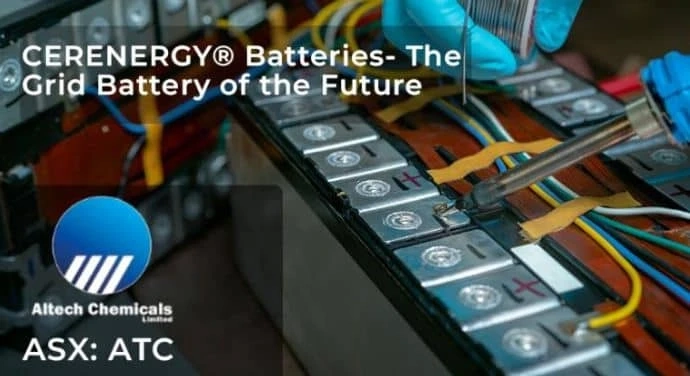ALTECH CHEMICALS LTD (ASX: ATC) PRESENTS CERENERGY® Batteries as the ideal grid storage alternative to Lithium-Ion Batteries (LIBs), overcoming the costs and challenges faced by LIBs.
Challenges with Lithium-ion Batteries
Fire explosion
Lithium-ion batteries come with A FLAMMABLE LIQUID ELECTROLYTE and a flammable plastic separator. Overheating or overcharging the battery can lead to oxygen production inside the battery, which can lead to a thermal runaway or fire explosion, hard to put out.
Not Suitable for Cold/desert Climates
Lithium-ion batteries operate in a relatively narrow temperature range (between +15oC to +35oC). At lower temperatures, the liquid electrolyte in the battery turns more viscous, slowing lithium reactions. At 0°C, the battery capacity reduces to 70%.
Battery Lifespan
Lithium-ion degrades with each charge and discharge cycle. This is often due to detrimental side reactions and crystalline dendrite growth. The degradation can intensify when lithium-ion batteries operate outside the ideal temperature range. The grid storage lifespan of lithium-ion batteries is expected to be 7–10 years. Most electric vehicle (EV) manufacturers will guarantee eight years of battery life when the battery’s capacity drops below 70%.
Ethical Cobalt Supply
The global demand for cobalt is expected to surge to 220,000 mt by 2025. The Democratic Republic of Congo (DRC) is currently the biggest producer of cobalt, accounting for 70 percent of the global cobalt supply. However, child labor and human rights abuses in the DRC challenge the ethical supply chain concerns in the industry.
Graphite Supply
Graphite is expected to remain the dominant material until at least 2035. Hence there is a graphite deficit due to low supply, high demand, and cost.
Copper Crunch
Copper is a high-priced metal, and the EV industry requires 2.5 times more copper than an Internal Combustion Engine (ICE). More copper mines need to be built or expanded to meet the rising demand and scarcity.
With such challenges and concerns, what can be the ideal alternative to lithium-ion batteries?



